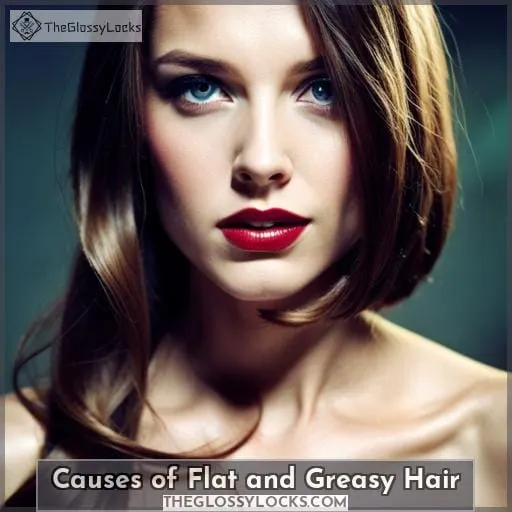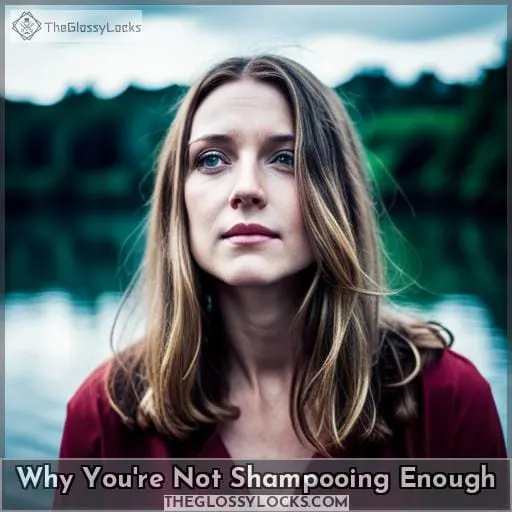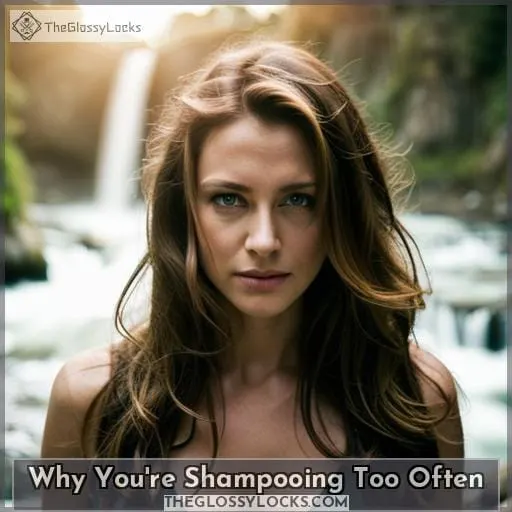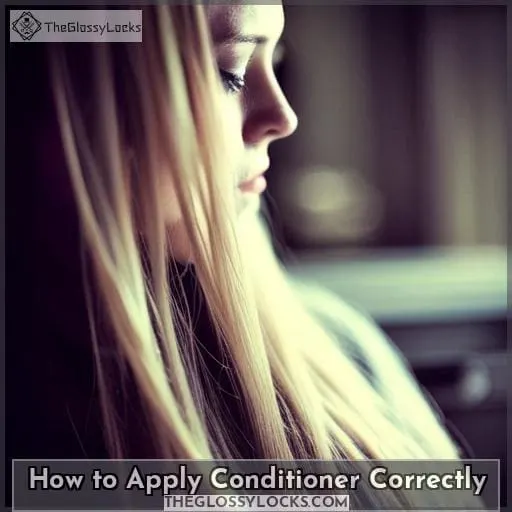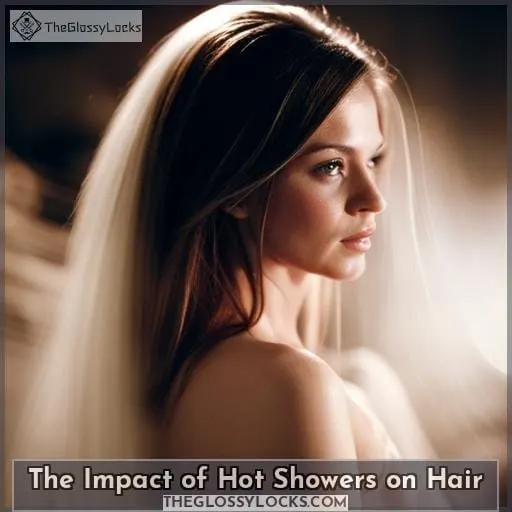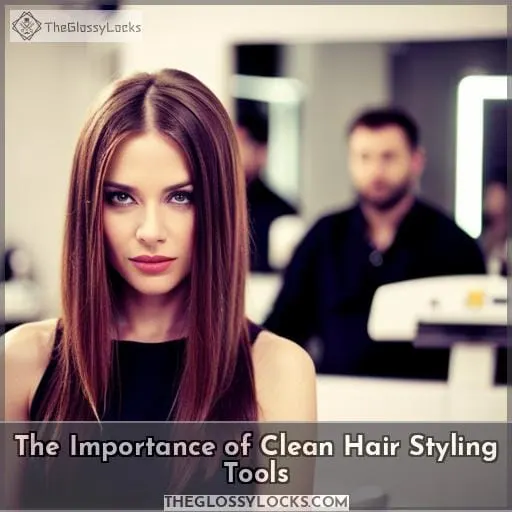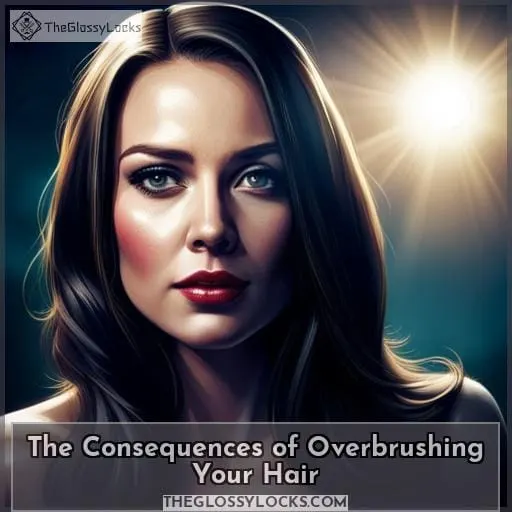This site is supported by our readers. We may earn a commission, at no cost to you, if you purchase through links.
 Frustrated with flat and greasy hair? You’re not alone. Many of us have dealt with this issue at some point, struggling to make our locks look lively and voluminous as they did before. If you find yourself asking, Why is my hair so flat and greasy? it’s time to investigate the causes behind your lank strands — from overactive sebaceous glands to product buildup or improper styling techniques — in order to fix it now! With a few tweaks in your routine, you can restore body back into your tresses for shiny locks that won’t weigh down easily.
Frustrated with flat and greasy hair? You’re not alone. Many of us have dealt with this issue at some point, struggling to make our locks look lively and voluminous as they did before. If you find yourself asking, Why is my hair so flat and greasy? it’s time to investigate the causes behind your lank strands — from overactive sebaceous glands to product buildup or improper styling techniques — in order to fix it now! With a few tweaks in your routine, you can restore body back into your tresses for shiny locks that won’t weigh down easily.
Table Of Contents
- Key Takeaways
- Causes of Flat and Greasy Hair
- Why You’re Not Shampooing Enough
- Why You’re Shampooing Too Often
- How to Apply Conditioner Correctly
- The Impact of Hot Showers on Hair
- The Negative Effects of Excessive Straightening
- The Importance of Clean Hair Styling Tools
- The Consequences of Overbrushing Your Hair
- The Downside of Relying on Dry Shampoo
- Conclusion
Key Takeaways
- Overactive sebaceous glands and product buildup can cause flat and greasy hair.
- Proper hair care routines, such as using clarifying shampoo and limiting heat styling, can help address these issues.
- A balanced diet and nutrient-rich foods are essential for maintaining healthy hair.
- Avoiding over-brushing and using styling products sparingly can prevent damage and oiliness.
Causes of Flat and Greasy Hair
Having flat and greasy hair can be frustrating. The most common causes are overactive sebaceous glands, product buildup, lack of nutrients, and improper hair styling practices. When your scalp overproduces oils, products accumulate, hair lacks nutrients, or you use heat tools incorrectly, the result is limp, oily hair that won’t hold a style.
Overactive Sebaceous Glands
Your overactive sebaceous glands are pumping out too much oil, weighing your hair down and making it look flat and greasy.
- Use a clarifying shampoo weekly to remove excess oil.
- Gently massage your scalp during the shampoo to stimulate circulation.
- Prioritize scalp health with exfoliating scrubs or masks.
Consider regulating sebum production through scalp massage, exfoliation, and haircare products to prevent flat, greasy hair from overactive oil glands.
Product Buildup
Not only does all that gunk from styling products weigh your mane down something fierce, it makes your scalp itch and flake like you’ve got dandruff times ten. Product buildup can completely change the texture of hair, leaving it flat and greasy at the roots.
Hair cleansing is key to maintaining a healthy scalp, but too much shampooing can strip away the natural oils needed by hair follicles for growth. To help prevent oily roots while preserving moisture in mid-lengths and ends, use conditioner sparingly on those areas instead of applying it over the entire head.
Clean tools regularly to avoid product transfer onto clean strands. Embrace natural texture as heat styling contributes to excessive grease production.
Lack of Nutrients
Diet’s impact is huge for limp, greasy hair.
- Nutrient deficiency
- Imbalanced diet
- Poor hair health
Lack of key vitamins and minerals leads to a nutrient deficiency, which prevents hair from getting what it needs. One should ensure a balanced diet with plenty of nutrient-rich foods like avocados, eggs, and salmon.
Consider supplements to fill any gaps. Target limp hair’s nutritional needs for the best chance of reversing greasiness.
Improper Hair Styling
Brush your locks with care, lest heavy hands weigh down their flair. Your hairstyling habits may lead to flat hair. Overbrushing, ponytails, and other styles can stretch hair and break strands. Instead, embrace waves and curls.
Use volumizing mousse or sea salt spray. Set hair delicately with scrunchies. Allow your tresses to claim their natural shape and flair once more.
Why You’re Not Shampooing Enough
Washing your hair too infrequently can lead to limp, greasy strands. Over time, dirt, oil, and product residue build up on the scalp and hair.
Depending on your hair texture and goals, shampooing every 2-4 days is ideal for most. Too much time between washes causes oil and debris buildup that coats the scalp and hair, dragging it down.
Thoroughly shampooing with a formula suited for your needs cleans deeply to lift and remove excess oil and product. This revives hair’s natural bounce. Along with keeping styling tools clean, regularly washing gives hair a fresh start.
Consult your dermatologist if unsure what shampoo frequency and ingredients are right for your scalp health and hair goals.
Why You’re Shampooing Too Often
Wash your hair sensibly, honey, or it’ll only get greasier ‘n the pig pen at the county fair!
Everyone’s hair is different and needs its own unique care. If you’re shampooing too often – more than 2-3 times a week – then you may be overstripping your scalp of sebum, which can lead to oily roots and limp strands.
To keep things balanced, treat yourself to regular pre-shampoo conditioning treatments with protective sprays for extra hydration. This will prevent breakage when styling fine layers. Baby shampoos are also good options as they tend to be gentler on delicate scalps while still cleansing properly without stripping away all your natural oils.
When it comes down to styling products, try using volumizing or thickening agents sparingly.
Blow drying upside down adds body, but don’t forget about heat protection spray before doing so. Straightening requires some oil contact, but embrace the natural texture by limiting appliance usage instead of going overboard every time you wash.
This way, there’ll still be enough sebum left intact for proper nourishment within each strand without weighing them down further due to excess product build-up.
How to Apply Conditioner Correctly
Apply it gently from mid-shaft to ends, never on roots, so your locks get moisture without excess weight.
Focus on nurturing ends by taking three key steps:
- After shampooing, apply conditioner to mid-lengths and ends only. Avoid contacting the roots.
- Use a wide-tooth comb to evenly distribute conditioner from mid-shaft down. This coats each strand without creating clumps.
- Rinse thoroughly with cool water to seal in hydration. For extra nourishment, allow conditioner to penetrate for a few minutes before rinsing.
Following this targeted application method gives hair the moisture it craves without weighing it down. Healthy, bouncy hair starts with proper conditioning techniques. Embrace your natural texture and say goodbye to flat, greasy strands through thoughtful conditioner use.
The Impact of Hot Showers on Hair
If you wanna rock vivacious golden locks, stop searing your scalp! Taking scalding hot showers may feel great, but can wreak havoc on your hair. The extreme heat from hot water strips your scalp’s natural oils, causing your oil glands to overproduce oils.
Additionally, hot water alters hair texture by opening and swelling the cuticles. As a result, hair becomes rough and tangled from the damage. Moreover, it disrupts moisture balance, resulting in a dry, irritated scalp.
To maintain healthy hair and scalp, keep your showers warm – not steaming hot. Let the last rinse be cool to close cuticles. Regularly use hydrating shampoos and serums. Look for soothing ingredients like aloe, coconut oil, and shea butter to nourish your scalp.
The Negative Effects of Excessive Straightening
You’re over-straightening and depriving your hair of natural oils. Constant heat styling leads to damage and dryness over time. The high temperatures break down keratin protein and strip the cuticle layer that protects each strand.
To reduce the risks, limit heat tools to 1-2 times per week. Alternate with natural air drying or soft styling like braids or loose waves. When heat styling, always prep with a protectant spray or serum. Lower the temperature on your flat iron or blow dryer, and avoid direct contact on already slick or fragile areas.
Give your hair a break with deep conditioning masks to restore nutrients and elasticity. With some restraint on the hot tools, you can achieve your desired look while maintaining the integrity and health of your hair.
The Importance of Clean Hair Styling Tools
Don’t let dirty tools weigh your tresses down. Keeping your hair styling tools clean is a crucial step for adding body and bounce back to limp locks. As brushes, heated tools, and accessories accumulate leftover styling products, oils, and dead hair strands with repeated use, they become breeding grounds for dirt, grime, and bacteria.
Using unclean tools presses all that residue and buildup right back into your hair, making it appear dull, dirty, and lifeless. Set aside regular time each week to thoroughly wash combs, brushes, clips, and more in warm soapy water.
Not only will diligent hair tool hygiene remove excess oils and product, it helps tools glide smoothly through hair, reducing damage and frizz. You’ll be amazed at the lightweight, voluminous shine your strands showcase after simply keeping your styling equipment squeaky clean.
Beautiful hair begins with proper tool care.
The Consequences of Overbrushing Your Hair
Overbrushing can damage hair cuticles, aggravating oiliness and frizz. Constant friction causes the cuticle, or outer layer, to lift and separate. This exposes the cortex underneath, creating a rough surface that grabs onto oils.
Overbrushing lifts cuticles, allowing oils to travel down the hair shaft faster.
Focus brushing efforts on the ends, using a wide-tooth comb for detangling. Work in small sections and avoid forcefully dragging bristles along the scalp. Healthy techniques prevent breakage while redistributing natural oils along the hair length.
For thick or frizzy hair types, finger detangling may work better than brushing altogether. Scalp massages help keep follicles clear of excess oils without risking overbrush damage.
Ultimately, proper brushing boosts shine and minimizes frizz without compromising hair health.
The Downside of Relying on Dry Shampoo
See, over-relyin’ on dry shampoo leaves an invisible gunk that weighs hair down over time. It can seem convenient to just spray some in there, but too much dry shampoo can lead to buildup that dulls hair’s natural shine.
Instead of reachin’ for the dry shampoo daily, mix it up with other grease-fightin’ tricks. Massage your scalp while shampooing to remove excess oils. Use a clarifying shampoo weekly to sweep away any hidden gunk.
And don’t forget – nothin’ beats a good ol’ shampoo to remove debris and refresh hair.
Embrace your texture with volumizin’ mousses or texturizin’ sprays instead of tryin’ to remove every trace of oil.
So put down the dry shampoo once in a while and let your natural beauty shine through.
Conclusion
So don’t let limp, greasy hair get you down! With some adjustments to your hair care routine – like shampooing less often, properly applying conditioner, and keeping styling tools clean – you can restore bounce and shine.

